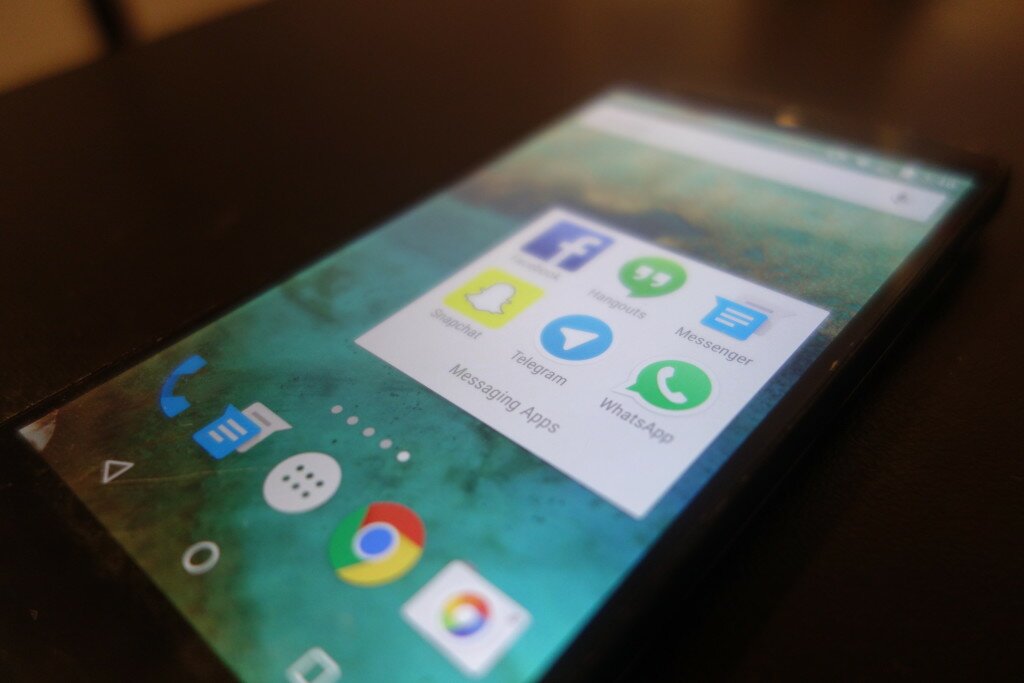Humans are social beings – we live in different communities of varying size,s and communication is our most basic form of interaction. For as long as the social technology has existed, instant messaging has been the foundation. If we go back 10 years, our generation largely utilised MSN Messenger (later Windows Live Messenger) or ICQ alongside SMS as the main ways to talk to each other. By 2008, the earlier social networks such as MySpace and Bebo were quickly being made irrelevant by the rapid rise of Facebook. Then in 2007, the iPhone ushered in the smartphone era that we live in today.
Now we have a problem – too many messaging apps. Messaging is broken because none of these apps talk to each other; they are all completely separate services that exist within ‘walled gardens’. Once upon a time all the major messaging platforms such as Google Talk, AOL Instant Messenger, ICQ, and Yahoo! used XMPP/Jabber which was a protocol that allowed you to use any of these services to message people regardless of which service they used. It was messaging utopia.
But as Jabber declined, all these closed messaging platforms began popping up and now there is no longer a standard and common protocol that everyone is using. As a result, most smartphone users will have at least two or three instant messaging apps installed. Most will have your default SMS app, iMessage or Google Hangouts, a social network-based messaging app such as Facebook Messenger, and an independent phone number-based messaging app such as WhatsApp or Viber. We need to connect with everyone but not everyone is on one single service. It’s not a matter of which platform has the most or best features; what matters is where your friends are.
So let’s look at the current state of messaging and the increasingly vast array of options available to us in this space.
The Old Timers (SMS and MMS)
Ah, the common denominator between anyone that has a phone and a SIM card. Invented in 1982, this messaging system is standing the rest of time. Unlike all the other messaging apps mentioned in this article, SMS relies on telephone networks to send messages, rather than over the Internet. Phone carriers around the world are reducing the price of SMS and, for many, unlimited plans are available. As a result, SMS is arguably making a comeback as we become either disillusioned with the saturated messaging market or just want a true, tried and tested way to send a message. It’s never going to go away but it’s not necessarily going to win the war either.
The Apple v Google Ecosystems (iMessage v Hangouts)
These exist within the larger iOS v Android discussion that has been going on for years – not going into that today. Both of these platforms require an Apple ID or a Google account and both come preinstalled on iOS and Android devices respectively. The difference? You can download Hangouts on iOS (as well as Windows, OS X, Linux, and Chrome OS) but you can only use iMessage on iOS and OS X. In 2014, legal action was taken against Apple for iMessage lock-in: if you switched from an iPhone to an Android phone without switching iMessage off, your friends’ iPhones would still be sending you iMessages instead of SMS, which has lost people millions of messages. Other than that, both of these have largely similar feature sets (I say that loosely) and both allow you to merge your SMS messages and iMessage/Hangout messages in the same thread for each contact.
The Social Networks (Facebook Messenger)
To be honest, Facebook Messenger is really the only contender in this category. Facebook understands the importance of messaging and they’re banking on the fact that it has over 1.3 billion users on its platform. In 2014, Facebook made the controversial decision to force users to download the Facebook Messenger app to access your Facebook messages on your smartphone – they were exporting it out of the main Facebook app. Many were unhappy, including this writer – another messaging app I have to have! (Fortunately I’ve found a workaround to re-enable Facebook messages within the main app). Facebooks justifies this decision as necessary to focus firmly on the messaging experience, and in November 2014 it announced its app now has over 500 million monthly users. The upshot of Facebook Messenger is that its works – you can group message, add photos, send voice messages, send locations, voice call, video call – none of which are particularly unique to Facebook, but combine it with the accessibility of nearly all your friends on the same platform and this places Facebook in a strong position.
The Self-destructors (Snapchat and Telegram)
We all know what Snapchat is – you take a photo, choose a time limit, select your recipients, and send. Those recipients can see that photo for your specified time limit and then it disappears. In May 2014, Snapchat added the ‘chat’ aspect into their app which allowed you to send messages to contacts which disappeared after they were viewed. They also added live video chatting at the hold of a button. Snapchat has been sought after by many of the larger technology companies in Silicon Valley and spawned a Facebook-owned clone which was later killed.
Telegram meanwhile is an app you might not have heard of yet but I believe deserves a brief mention. With a strong focus on encrypting/securing your messages, it also features self-destructing messages, photos, videos and documents of all file types and up to 1GB in size. It runs on Android, iOS, Windows Phone, Windows, OS X, and Linux. The main reason it hasn’t reached the mass market is that it was only launched in 2013 – a relative latecomer to the game. But that won’t stop it – when Whatsapp went down for four hours in February 2014, 5 million people signed up to Telegram. Keep an eye out for this one.
The Market Leader (Whatsapp)
WhatsApp launched in 2009 and was the first messaging app that actually threatened the status quo of chat. All you needed to register was a phone number and you were off – free messages to your contacts. Many of its features have been made ubiquitous by other messaging apps and as a result its main advantage is that it is the most globally popular messaging app with over 600 million active users. The downside? No access from the web. WhatsApp only supports mobile operating systems (iOS, Android, Windows Phone). In February 2014, Facebook acquired WhatsApp for US$19 billion and in November 2014, WhatsApp introduced end-to-end encryption which brings it on par with Telegram in terms of security.
The competition for your messages is one that has no end in sight. We’ve explored some of the major messaging platforms and it’s a ridiculous amount. What’s even more troubling is that none of them hit all the right spots – some are less secure, some are tied to what phone you use, some have no desktop app, and some are too niche. At the start of this article I mentioned that the apps you have installed/use are tied to the ones your friends use.
That’s not going to change. I’ll still send SMS messages to most people, I’ll still use Facebook out of necessity but Hangouts lets me message anywhere without the distraction of Facebook, and I’ve abandoned Snapchats’ text messaging but self-destructing photos are more popular than ever. I’ve tried WhatsApp, Telegram, Viber and decided they were unneeded – anyone on these I’d SMS instead. Overall these four messaging apps are my mainstays.
What messaging apps do you use?




Binfer messaging app does not store your message on external servers. It is completely free. See http://www.binfer.com/blog/-/blogs/binfer-3-1-released-secure-instant-messaging